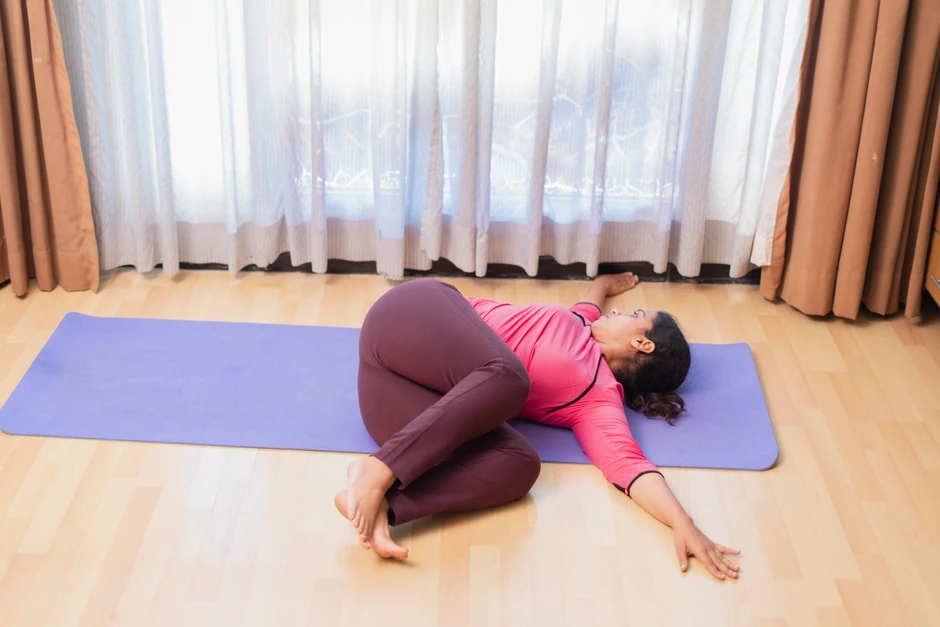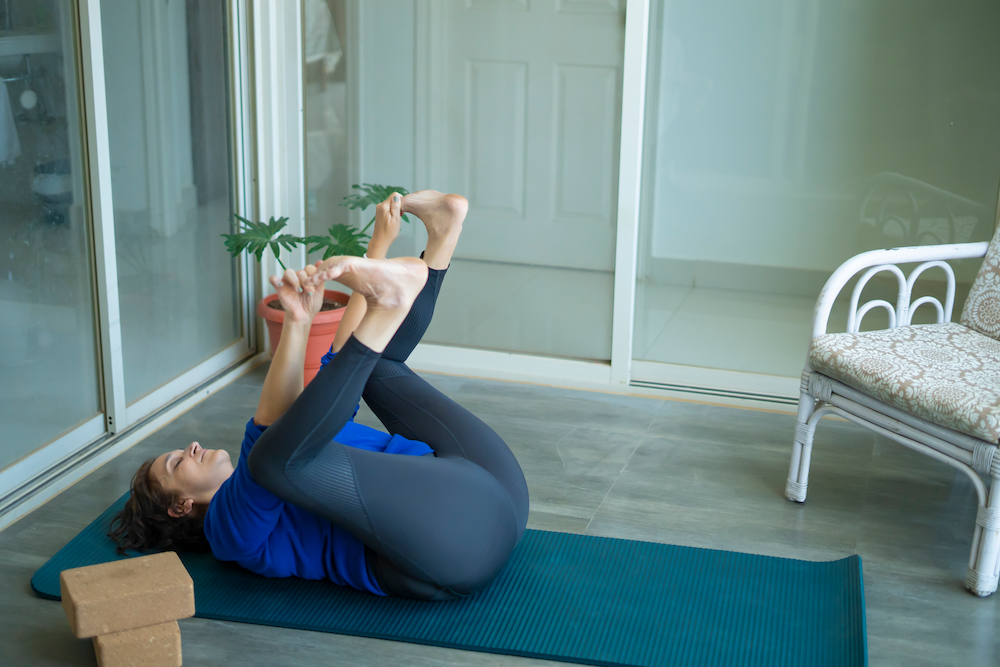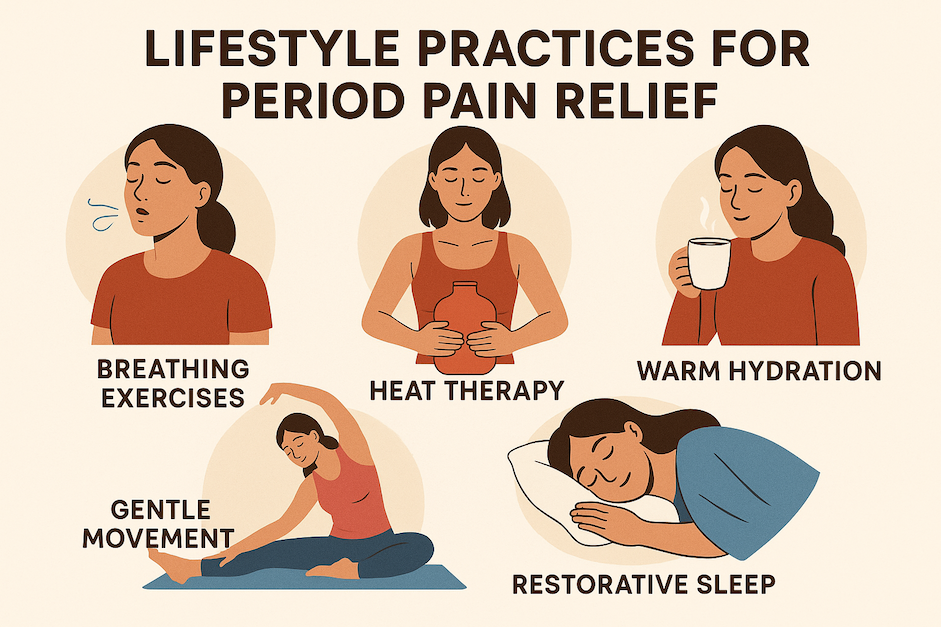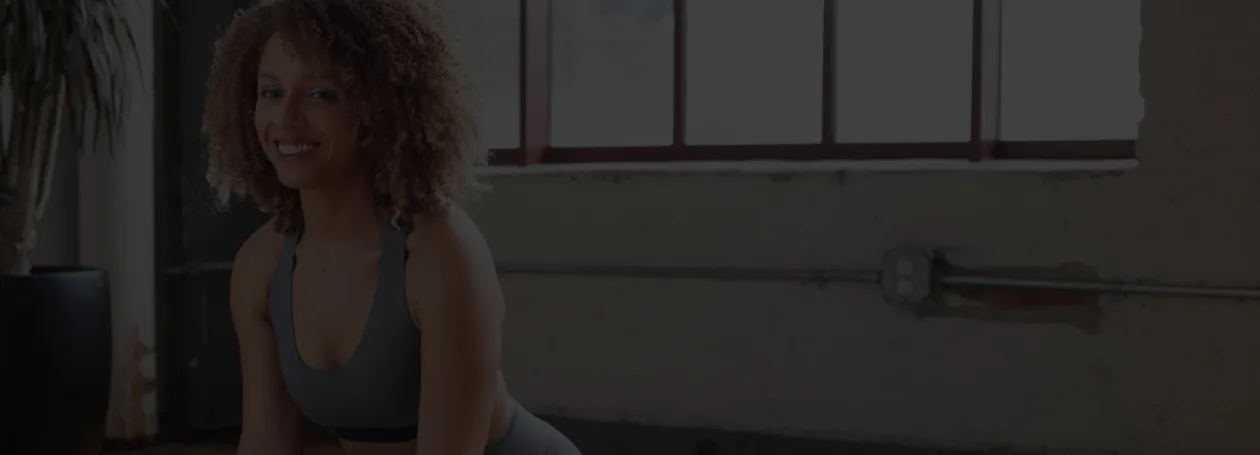
.jpg)
If you’ve ever spent the first day of your period curled up with a heating pad, you’re not alone. Up to 90% of people who menstruate experience cramps, and for many, the pain can disrupt everything — from simple daily tasks to sleep. While pain relievers and rest can help, more people are now turning to gentle, accessible movement to ease discomfort naturally.
Yoga for period cramps works by increasing blood flow to the pelvic region, reducing uterine muscle tension, and activating the parasympathetic nervous system to lower pain signals. Gentle poses, such as Child’s Pose, Cat-Cow, and Supine Twist, can provide relief within 5–10 minutes of practice.
Unlike intense workouts, yoga’s slow and restorative movement helps soften tight muscles, calm stress, and improve circulation in the lower belly and back. Even a few mindful stretches can make a noticeable difference, especially on low-energy days.
In this guide, you’ll learn the most effective gentle yoga poses for period cramps, when to practice them, and how to build a soothing routine you can rely on every month.
Yes, yoga is scientifically proven to help with period cramps. Research shows that regular yoga practice can reduce menstrual pain intensity by 40–50% and may even decrease the need for pain medication over time. Even a single short session of gentle stretching and deep breathing can help relax uterine muscles, improve blood flow, and calm the nervous system — all of which play a major role in reducing menstrual cramps.
Here are three ways in which yoga helps:
This combination of physical relief and emotional grounding makes yoga one of the most accessible and supportive tools for menstrual pain. And with simple modifications or guidance from a certified yoga teacher, it’s easy to create a practice that feels safe and soothing throughout your period.
[inline-CTA-1]
These gentle yoga stretches for period cramps target the lower abdomen, hips, and lower back — the areas most affected during menstruation.
_optimized.webp)
This pose gently compresses the abdomen to massage reproductive organs, while easing lower back tension and calming the nervous system, making it ideal for severe cramps.
Pro Tip: Place a pillow under your belly for gentle pressure to soothe cramps.
Modification: If knees are sensitive, place a folded blanket between your hips and heels.

This pose creates gentle, rhythmic movement in the pelvis, massaging the abdominal and digestive organs while easing lower back tension, making it safe and soothing for your period.
Pro Tip: Draw slow circles with your hips to relieve deep pelvic tension.

This pose stimulates the digestive and reproductive organs, releases tension in the lower back and hips, and helps ease bloating and gas.
Pro Tip: Place a pillow under your top knee to soften the twist.

This pose gently opens the hips and pelvis, boosts circulation to the reproductive organs, and helps reduce menstrual fatigue.
Pro Tip: Support your knees with pillows if they don’t reach the floor.

This pose reduces bloating and swelling, reverses blood flow from the legs, and offers deep rest on heavy-flow days while helping lower stress hormones.
Pro Tip: Perfect for when you have no energy — requires zero effort.

This pose gently opens the hips, relieves lower back pressure, and creates space in the pelvic region, helping ease digestive discomfort.
Pro Tip: Can’t reach your feet? Hold behind your thighs or use a strap.
This pose gently opens the front body, strengthens the pelvic floor for long-term cycle health, and helps reduce lower back pain while giving you a natural energy boost on sluggish days.
Pro Tip: Place a yoga block under your sacrum for a supported, restorative version.
These seven gentle poses can be practiced together as a 10–15 minute sequence or used individually throughout the day when you feel cramps, tension, or fatigue. Start slowly, breathe deeply, and give your body all the support it needs during your cycle.
Creating a simple, soothing yoga routine during your period doesn’t require experience, equipment, or extra energy. The goal is comfort — not perfection. A gentle flow can help calm cramps, soften tight muscles, and support emotional balance on the days you need it most.
Here’s a quick 10-minute period relief sequence you can try anytime:
You can do this routine on a yoga mat, your bed, or even a carpeted floor. Wear comfortable, loose clothing and keep a pillow or blanket nearby for support. If your stomach feels sensitive, practice on a light or empty stomach.

Yoga is one of the most effective natural ways to ease cramps, but pairing it with a few supportive habits can help relieve cramps even further. Here are some science-backed practices to complement your yoga routine:
If your cramps are severe, worsening over time, or accompanied by symptoms like heavy bleeding, fainting, or sharp pelvic pain, speak with a healthcare provider. Conditions like endometriosis or PCOS may require additional support.
Child’s Pose (Balasana) is often considered the best single pose for period cramps. It gently compresses the abdomen, releases lower back tension, and is accessible even when cramps are strong. However, your body might respond better to alternative poses like Supine Twist or Legs-Up-the-Wall, depending on where you feel discomfort.
During your period, it’s best to avoid intense inversions (like Headstand or Shoulder Stand), deep backbends, and vigorous or high-heat yoga styles. These movements can increase abdominal pressure, strain the lower back, or feel too intense when your energy is low. Stick to gentle, restorative poses that support your body rather than challenge it.
Yes, if you feel up to it! Gentle yoga is safe and effective on Day 1. Stick to restorative poses like Child’s Pose, Cat-Cow, and Supine Twist. Avoid intense workouts, deep backbends, and strong inversions until your flow lightens and your energy returns.
To make your practice safe and effective, book a free 1-on-1 session today!
Absolutely. Twists reduce bloating, forward folds help ease anxiety, and the overall practice balances stress hormones that can affect mood. Regular yoga throughout your cycle can also reduce PMS symptoms like irritability, breast tenderness, and fatigue.
Yoga and medication can work together. Yoga may reduce your need for medication, but it’s not a replacement for medical care. Many people find the best relief by combining gentle yoga with over-the-counter pain relief. Always follow your doctor’s recommendations.
The best time to practice yoga is when cramps first begin or when you feel tension in your lower belly or back. Gentle poses work especially well on heavy flow days, while slightly deeper stretches may feel comfortable by Day 3–4 as your flow lightens.
Always listen to your body and choose movements that feel soothing and supportive.




Receive personalized guidance tailored to your unique fitness goals, live with a dedicated coach—no credit card required.